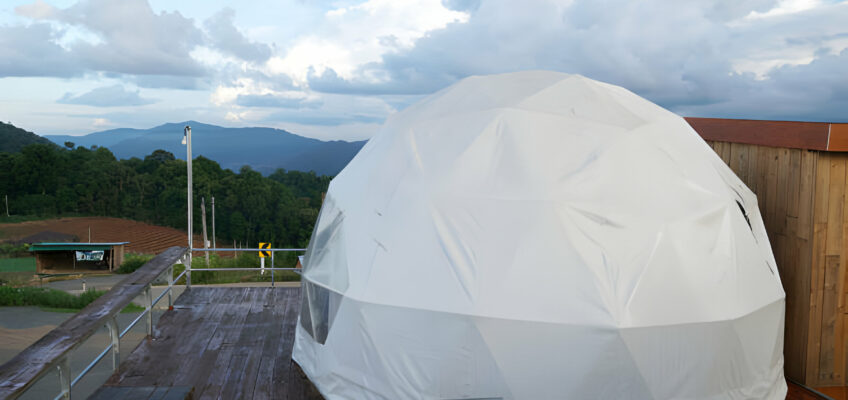Are Air-Supported Domes Suitable for All Climates?
Air-supported domes have become flexible and creative structures, with applications across multiple sectors and purposes. However, a frequently asked topic arises regarding their appropriateness for various climates. The article will examine the aspects that affect the adaptability of air-supported domes to varied weather situations, providing details about their advantages and concerns in many climates.
Understanding the Basics of Air-Supported Domes
Air-supported domes, frequently referred to as expandable or dynamic structures, are built by utilizing a framework surrounded by a flexible fabric that is pressured with air to uphold its form. These structures have become popular because of their lightweight construction, cost efficiency, and ability to be used for various purposes, such as sports facilities, event sites, and emergency shelters.
Factors Influencing Climate Suitability
Wind Resistance
- Consideration: Air-supported domes generally exhibit good wind resistance.
- Explanation: The membrane’s flexibility and the constant internal air pressure are key factors in enabling the structure to resist wind forces. However, the exact wind resistance changes depending on factors such as the design, materials employed, and the degree of pressure.
Snow Load Capacity
- Consideration: Air-supported domes may face challenges with heavy snow loads.
- Explanation: The design of air-supported domes typically allows snow to slide off, reducing the risk of excessive accumulation. However, in regions with frequent heavy snowfall, the potential for snow load can be a consideration. Proper design and regular maintenance are crucial to managing snow-related challenges.
Temperature Extremes
- Consideration: Air-supported domes can adapt to a wide range of temperatures.
- Explanation: The membrane’s flexibility and capacity to control internal air pressure allow these structures to adjust to varying temperatures, including both hot and cold regions. However, extended exposure to severe temperatures can gradually degrade the structural components, requiring the installation of suitable insulation under particular conditions.
Climate-Specific Design Features
- Consideration: Customization can enhance climate adaptability.
- Explanation: Manufacturers often provide customization options to enhance a dome’s adaptability to specific climates. This may include additional insulation for cold climates, UV-resistant materials for sunny regions, and other climate-specific design features.
Climate-Specific Considerations
Hot and Sunny Climates
In hot climates, the ability of air-supported domes manufacturers to provide shade and reduce indoor temperatures is beneficial. Proper ventilation and UV-resistant materials are essential to mitigate the impact of prolonged sun exposure.
Cold and Snowy Climates
In cold climates, insulation becomes crucial to maintain comfortable indoor temperatures. Additionally, designing the dome to allow for the controlled shedding of snow helps prevent excessive accumulation.
Windy Climates
In windy climates, attention to the design’s aerodynamics and wind load capacity is essential. Site-specific wind studies can guide the installation and ensure optimal performance.
Secure Your Ideal Air-Supported Dome for Every Climate!
Ready to explore the limitless possibilities of air-supported domes across diverse climates? Contact us to discuss your specific needs, from windy terrains to snowy landscapes and sun-soaked environments. Our expert team will guide you through the customization options, ensuring that your air-supported dome is tailored to thrive in your unique climate. Elevate your projects with the unmatched adaptability of air-supported domes cost.
Contact us today to embark on a journey of innovative and climate-responsive structural solutions!
Conclusion
The flexibility of air-supported domes in different climates is dependent upon several elements, such as architectural design, construction materials, and customization possibilities. Although these constructions show flexibility to various weather conditions, it is essential to take into account specific climate-related challenges and include suitable design elements. Air-supported domes can effectively solve problems posed by extreme weather conditions such as extreme heat, cold, or strong winds if specialists have customized and designed them to meet individual climate requirements. With the progress of technology and the improvement of materials, the ability of these structures to adjust to different climates continues to improve, which makes them a favorable option for various uses.
